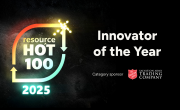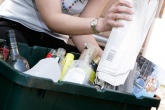Citizens confused by ambiguous recycling information, says study
Consumers want clear recycling information on the front of plastic packaging to reduce confusion about what can be recycled, according to a new study by plastics recycling charity RECOUP.
The study into consumer plastic recycling behaviour was supported by M&S and Plastics Europe and sought to understand the barriers to effective recycling, with findings to be incorporated into future Pledge2Recycle Plastics communications strategies developed by RECOUP.
Addressing public confusion over recycling has become a primary concern for government and industry as UK recycling rates continue to hover at around 45 per cent. As part of its Resources and Waste Strategy, the government consulted on proposals to improve the consistency of recycling collections and develop a consistent set of materials for collection across England, in a bid to reduce confusion over what can be recycled in different areas of the country.

The study found that when packaging bore recycling labels from the On Pack Recycling Label (OPRL) scheme that were placed prominently on the front of the packaging, confusion over what to do with the packaging was markedly reduced.
Other causes of confusion and barriers to recycling highlighted by the study included:
- Hygiene concerns: Consumers raised contamination and cleaning concerns over food packaging, especially those carrying raw meat, with confusion over how much they needed to clean leading to them being put in the residual waste to avoid getting it wrong.
- Reluctant to clean: Citizens were unwilling to clean items to ensure they could be recycled and reduce contamination and so threw them straight in the residual waste bin.
- Removing sleeves: The need to segregate some items before recycling was viewed as a hassle and so many ended up in the residual waste stream.
- Unsure what constitutes a food tray: Where local instructions state that food trays can be recycled, consumers are unclear over whether that refers to ready meal packaging or any trays that carry cooked or uncooked food.
- Insufficient recycling capacity: The size of the item or lack of recycling boxes could mean an item ends up in the residual waste bin even if a citizen knows that it is recyclable.
Commenting on the findings of the study, Anne Hitch, RECOUP’s Communications Manager, said: “This study identified barriers to behaviour change and attitude towards recycling. Consumer confusion is complex and subjective, but even when people are keen to recycle, the labelling means that items may end up in landfill that could otherwise be recycled. RECOUP’s Pledge2Recycle Plastics work shows that there is a need to invest in education and communication.”
Stuart Foster, CEO of RECOUP, added: “We know that the general public are generally keen to recycle more plastics. We have seen how communication and clear consistent messaging is critical in driving up recycling rates. We are working closely with our members and across industry to make recycling easy and economically viable. We all need to recognise how even making small changes can have a big environmental impact.”
You can download the full research study into consumer plastic recycling behaviour from the RECOUP website.








